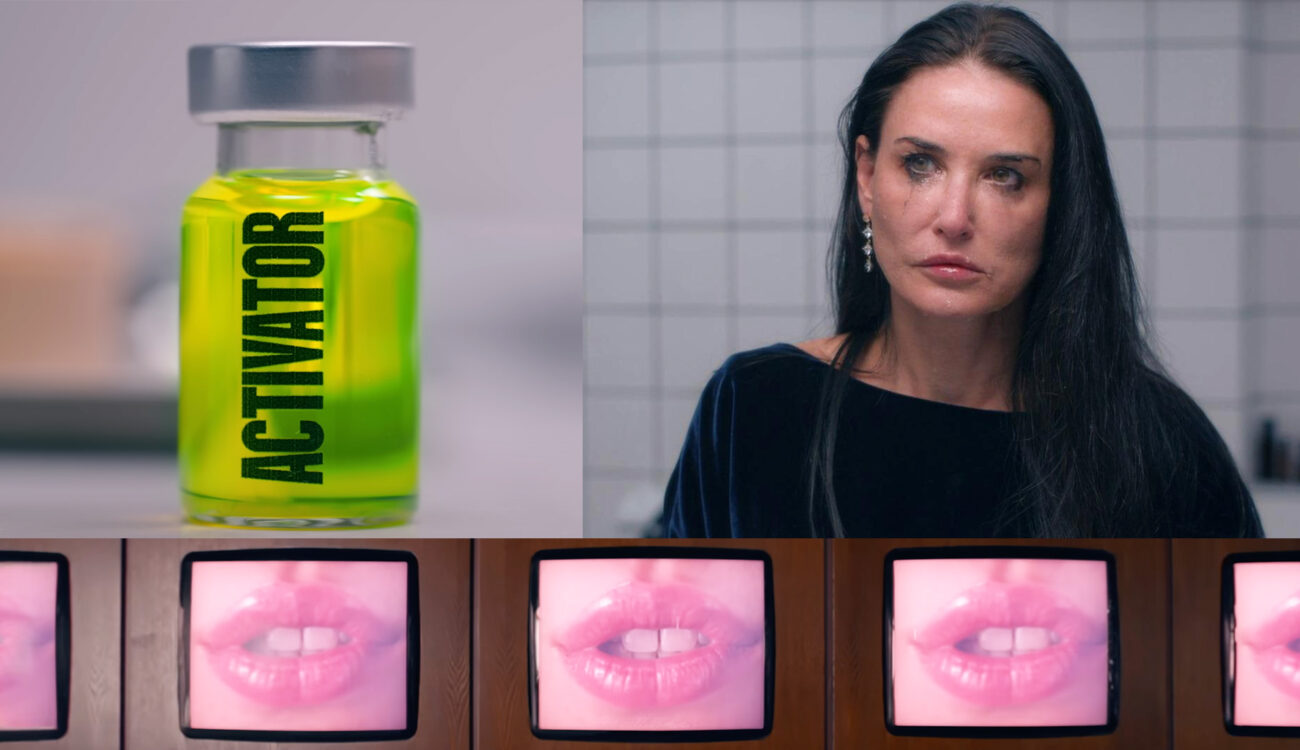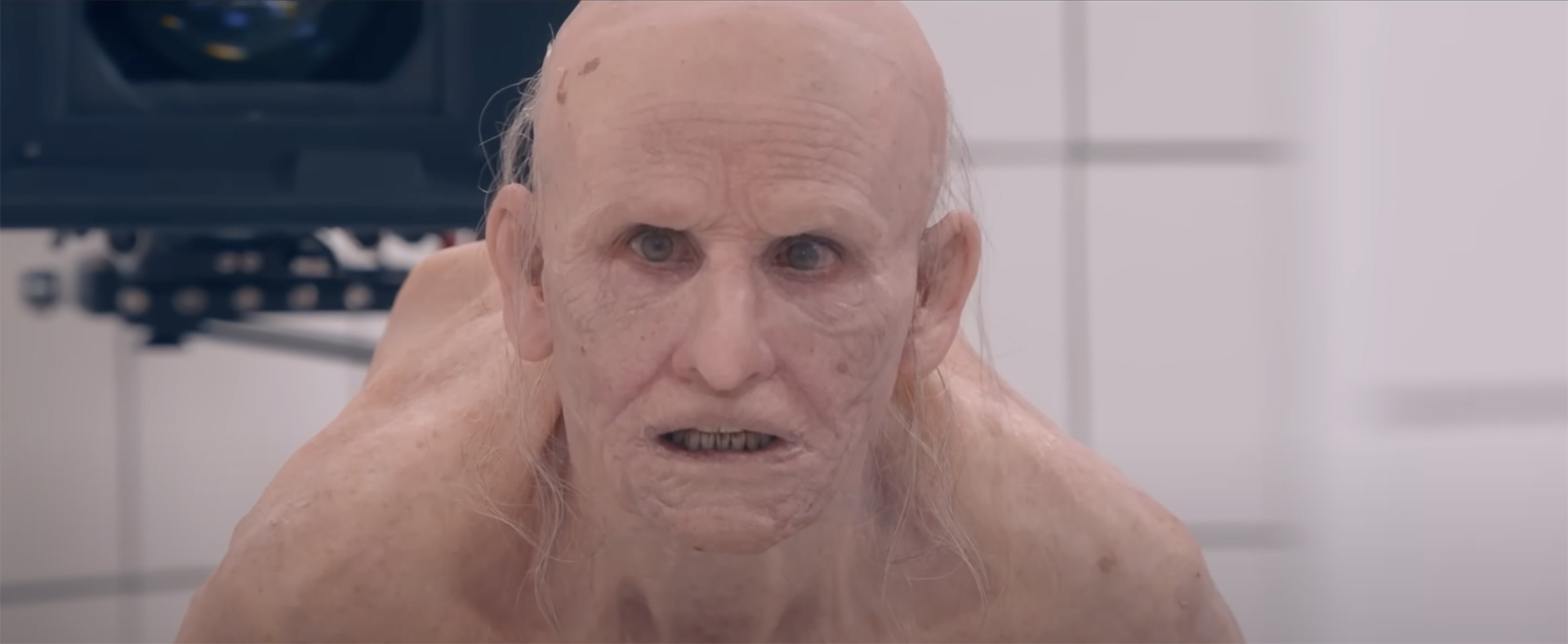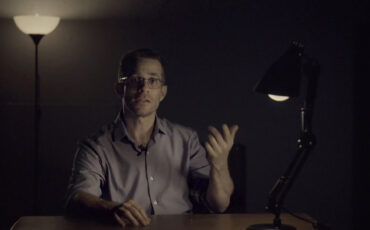
Award season is well underway! Following an established tradition, the week prior to the Oscars, we’re going to talk about some of the prominent Academy Award nominees. Let’s start with “The Substance,” a body-horror film with a distinct visual style. One of the biggest features of this movie is how it was made, prioritizing practical effects whenever possible. How does the special effect magic of “The Substance” work? What approach helped the creators achieve its incredible look & feel? Read all about it below!
Coralie Fargeat’s second feature film touches on topics as old as time–social pressure around a woman’s body, childbirth and fertility, and fear of aging. Yet it approaches them through a very original storyline, hyperrealistic and even grotesque visuals, and extensive use of prosthetic make-up and practical effects. No wonder the film has scored five Oscar nominations this year, including Best Picture, Best Original Screenplay, Best Makeup and Hairstyling, as well as nominations for Demi Moore’s brilliant acting and for Coralie Fargeat’s directing.
Cinematic magic of The Substance
“The Substance” follows Elisabeth Sparkle, a fading celebrity and fitness instructor who gets fired the day she turns 50. Desperate to stop aging, she agrees to take an experimental black-market drug that creates a younger and more perfect version of herself (portrayed by Margaret Qualley). The experiment quickly turns into a nightmare, and Demi Moore’s character must face the consequences.
In one interview, the director Coraline Fargeat explains that she grew up loving genre films: western, horror, sci-fi, fantasy – basically, anything and everything that would take you outside reality to be in a world where the rules are different. For sure, “The Substance” is packed with cinematic references and visual influences, be it David Cronenberg’s experiments with the human body or a cathartic bloody scene from “Carrie.”
Producing from the Front
Yet, to create a monster, Coraline leaned into the movies that truly moved her, like “The Elephant Man” by David Lynch or works by Guillermo del Toro. Their freaks always feel tender and human, regardless of their monstrous appearance. That’s precisely what “The Substance” also tries to build in its final chapter: a horrible creature for which we have empathy. As Coraline puts it: Behind all the flesh, there is a fragile and genuine soul that talks to our fear of being different and judged by others.
What helps to achieve this humane connection is that her monster feels absolutely real, just like you and me. Why? Here, we must thank the extensive use of practical effects, prosthetics, and makeup, accounting for 70-80% of the final film. Coraline Fargeat resisted going for cheaper digital VFX solutions, which was a crucial decision for “The Substance.”
Working with vision as part of the magic
In the making-of “The Substance” featurette (which I really recommend watching), Coraline Fargeat admits she works in a very detailed way and has a strong vision of how each shot should turn out in the end. (That’s why she even writes her framings into the script). It allows important technical decisions to be made in advance and truly unleashes the filmmaking magic. Say, if a scene needs to look like a sequence shot, going from hyper-macro to super wide, then they will play with the lenses and plan all the invisible cuts beforehand.
The same process applies to the effects. Coraline knew from the very beginning that she wanted them to be practical. First, because it’s a film about women’s bodies, literal flesh and bones, so why would you use CGI? Most importantly, though, she wanted to be able to shoot elements as she liked, play with framings, and put her hands into real things, so they had to be done in-camera. In my opinion, it’s also the most fun part of filmmaking and where the true magic of “The Substance” lies.
Special effects in the birthing scene
Oftentimes, this approach meant they had to invent their own tools and rules. If something had to be born from the character’s back, no one could tell you how it should look or work. Basically, it hasn’t been done before, so such scenes inspired creative solutions from the get-go.
The film’s practical effects are the masterful work of Pierre-Olivier Persin and his team, based in Montreuil, France. For the “birthing scene,” creators combined prosthetics on body doubles and traditional puppetry. Imagine a faceless hyper-realistic silicone dummy on a raised set that recreated the protagonist’s bathroom. Now add a team of 5-6 puppeteers and the director, hiding underneath it and operating every unsettling movement of a creature inside Elisabeth’s body. Crazy, right? But also utterly impressive!

Making-of stills source: MUBI 

As Coraline crafted all the shots with a love for detail, prosthetic makers knew beforehand what parts of the dummy would be visible and could focus on them. (That explains why the dummy doesn’t have any legs in the stills above). At the same time, because of the close-ups, they had to pay careful attention to the realism of the skin, crafting pores and cellulite and combining layers of various colors. (According to Pierre-Olivier Persin, no single paint color can replicate a natural skin tone; that’s why they mixed reds, yellows, greens, blues, and ochres, applying them in a pointillist method). Another challenge was to avoid the rubbery look of the prosthetics, so the team used soft materials, adding stiff edges only to the wound. That way, the sequence where Margaret’s character weaves the needle to stitch the skin appeared more realistic.
Use of prosthetics in The Substance
Of course, actors and their doubles had to wear a lot of various prosthetics in “The Substance”. That wasn’t always easy, admits Coraline Fargeat, but it allowed them to play with something real. In her opinion (and personally, I fully agree), it helps tremendously to feel what their characters are going through and perform accordingly.

Making-of stills source: MUBI 

Be it a simple spine scar or the full-body creepy costume, Demi Moore went for every challenge and took every risk. Coraline calls her “rock’n’roll” and says they talked a lot in pre-production, not only about story and character development but also about the expected workflows, practical effects, and visuals. It prepared the actress for the long and truly ambitious shoot.
Close-up magic of The Substance
If you’ve already seen the movie, you know that close-ups are a huge part of its visual language. They tell us–the audience–a lot without saying a word. Thus, for “The Substance,” Coraline Fargeat decided to group all shots without the actors at the end of the shooting. For one month, a reduced crew closed themselves in something they called “The Lab” and went on a journey of experimentation. A piece of the bathroom floor, fake arms, wigs, mutated prosthetic organs, pieces of food, Coraline injecting herself with a syringe full of “The Substance” – sounds like fun, doesn’t it?

Making-of stills source: MUBI 


Normally, we film close-ups directly during the scene, as it helps to preserve continuity and the matching lighting. So, the approach to “The Substance” was rather unusual. However, if you try to create a different world with its own rules, why not apply this to the filmmaking process?
Conclusion
The 97th Academy Awards will take place at the Dolby Theatre in Hollywood this coming Sunday, March 2, 2025. “The Substance” will compete for “Best Picture” along with 9 other nominees, including Sean Baker’s indie drama “Anora,” Brady Corbet’s monumental 3,5-hour work “The Brutalist,” and Denis Villeneuve’s cinematic masterpiece “Dune: Part Two.”
Have you followed the Oscars this year? What do you think about the nominees? And which part of the practical magic of “The Substance” impressed you most? Let’s talk about it in the comments below!
Feature image source: combined film stills from “The Substance” by Coraline Fargeat, 2024.































